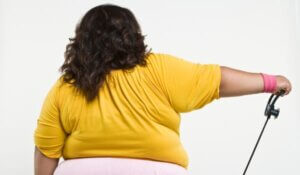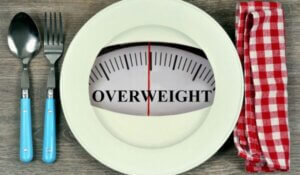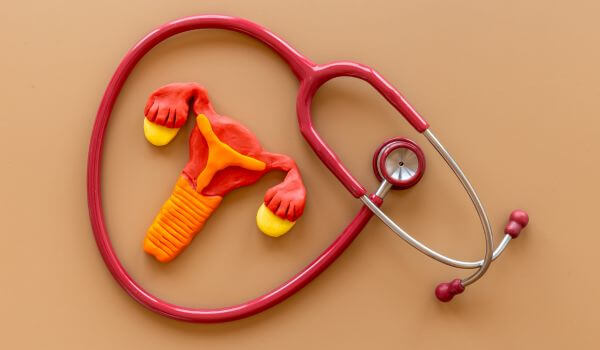
The AAP claimed these methods wouldn’t lead to eating disorders, citing studies to back this up. However, the authors of these studies said their work was misrepresented. This is concerning because eating disorders are becoming almost as common as asthma among U.S. children.
Experts worry that focusing too much on weight loss could inadvertently cause eating disorders. The AAP has since updated its obesity treatment guidelines and is working with eating disorder specialists to address these concerns. Despite the controversy, some believe the risks of obesity outweigh those of potential eating disorders, and the hardline approach of the new guidelines is seen as overdue by some experts.
Background on Childhood Obesity and Obesity Treatment
Obesity in the United States didn’t become a major issue until the 1980s and 1990s. In the 1970s, only about 5% of kids aged 2 to 19 were considered obese. However, during the 1980s and 1990s, that number tripled to 15%. This jump was largely due to changes in how Americans lived and ate, including the growing popularity of fast food. By 1999, the Centers for Disease Control and Prevention (CDC) started focusing on childhood obesity and released their first research on the issue.
In 2000, the CDC rolled out obesity treatment and prevention programs across different states. These efforts helped the public understand how serious childhood obesity was becoming. As a result, there were more ads encouraging physical activity, discussions about kids’ Body Mass Index (BMI), and efforts to promote healthier eating habits. Since then, the CDC has continued working on research and programs aimed at reducing obesity rates in the U.S.
However, despite these interventions, childhood obesity continues to rise, prompting the new guidelines from the AAP with the goal of weight loss and reducing obesity-related health issues.
How many people will be obese by 2025?
In 2016, around 800 million people globally lived with obesity; 670 million adults and at least 120 million children and adolescents. The World Health Organization forecasts that by 2025, an extra 167 million individuals, including both adults and children, will encounter health challenges linked to being overweight or obese.
What is the biggest contributor to childhood obesity?

The rise in technology has greatly impacted fast-food businesses, making food production quicker and more convenient. In the United States, many children consume large quantities of fast food, affecting their diet’s nutritional quality. Fast food is often made up of processed ingredients that are high in fats, carbohydrates, and sugars. Children who eat home-cooked meals less than three times a week miss out on essential fruits, vegetables, and nutrients needed for a healthy lifestyle.
As fast food consumption rises, children also get used to constant snacking while using technology. Studies show that kids eat about half of their meals and get a third of their energy intake while sitting in front of a screen. When children watch media, they tend to eat more calories without actually feeling hungry, making weight loss difficult.
Is a lot of snacking bad for you?

Physical activity is crucial for weight loss and obesity treatment, as it helps balance the calories children consume and burn. Only 22% of children in the U.S. meet the recommended activity levels, with 25% being completely inactive. This means one in four children spend the entire week without engaging in any physical activity. Lack of physical education in schools significantly contributes to childhood obesity in the United States. Schools are not meeting the recommended physical education guidelines, which suggest that elementary students should have 150 minutes and middle school students should have 225 minutes of physical education weekly.
The Dual Challenge: Obesity vs. Eating Disorders
Unfortunately, in both my nutrition work and as an educator, I see a lot of cases of eating disorders in children and adolescents. More than a few have been triggered by comments from healthcare professionals about their weight and the need for weight loss, especially among my teenage clients. The aggressive approach of telling a patient in no uncertain terms that they are overweight may certainly trigger someone to reduce their caloric intake too much, creating restricted or disordered eating patterns. And the worst part? Many of these comments are made without proper analysis of the patient as to why they may be overweight and looking into the cause.
So, when the new AAP recommendations came out, and many doctors praised the hardline approach to obesity treatment, alarm bells went off in my brain. Becoming more aggressive about fighting obesity this particular way has the potential to cause a lot of harm at a time when these developing humans are very vulnerable to outside influences.
Moving Forward: Balancing Approaches for Treating Childhood Obesity

Studies indicate that certain behaviors like dieting, discussing weight, and teasing about weight can lead to obesity and eating disorders in teenagers. However, having regular family meals provides a protective effect against these conditions. Another report from the American Academy of Pediatrics suggests that families should dine together to set examples of healthy eating habits.
Talking about weight, especially when family members comment on their own or a child’s weight to encourage weight loss, is linked to being overweight and having EDs. Furthermore, teasing children about their weight can lead to them becoming overweight and developing binge eating and severe weight-control behaviors, particularly in girls, while boys may also face overweight issues.
Should I encourage my child to diet?
Dieting has been shown to double the risk of becoming overweight and increase binge eating by 1.5 times within five years, according to a large study on healthy teens. Another study revealed that ninth-grade girls who dieted were three times more likely to become overweight by the 12th grade compared to their non-dieting peers.
Body dissatisfaction is a known risk factor for both obesity and EDs. Teens who feel content with their bodies often have parents and friends who promote healthy eating and fitness rather than focusing on dieting.
To effectively prevent obesity without contributing to eating disorders in teens, it’s important to deliver the right messages. Pediatricians are advised to take certain steps to tackle weight-related issues.
Firstly, it’s crucial to discourage practices like dieting, skipping meals, or using diet pills to lose weight. The emphasis should be on living a healthy lifestyle rather than focusing solely on weight.
Encouraging regular family meals is another key recommendation. These meals provide a chance to demonstrate healthy food choices and allow for meaningful interactions between teenagers and their parents.
Promoting a positive body image is also essential. Teens should understand that dissatisfaction with their bodies should not be a catalyst for weight loss.
Additionally, families should focus their conversations on healthy eating and staying active instead of discussing weight.
Finally, for adolescents who are obese or overweight, weight loss should be monitored carefully to prevent the medical complications associated with restrictive eating. I highly recommend this process is monitored by a healthcare professional with training in eating disorders to mediate this risk.
















